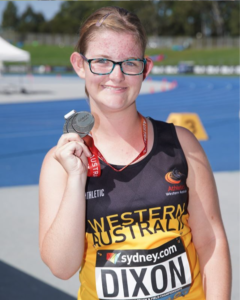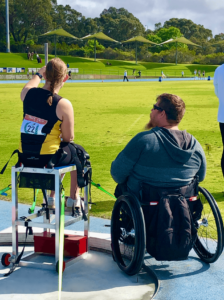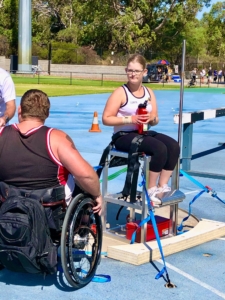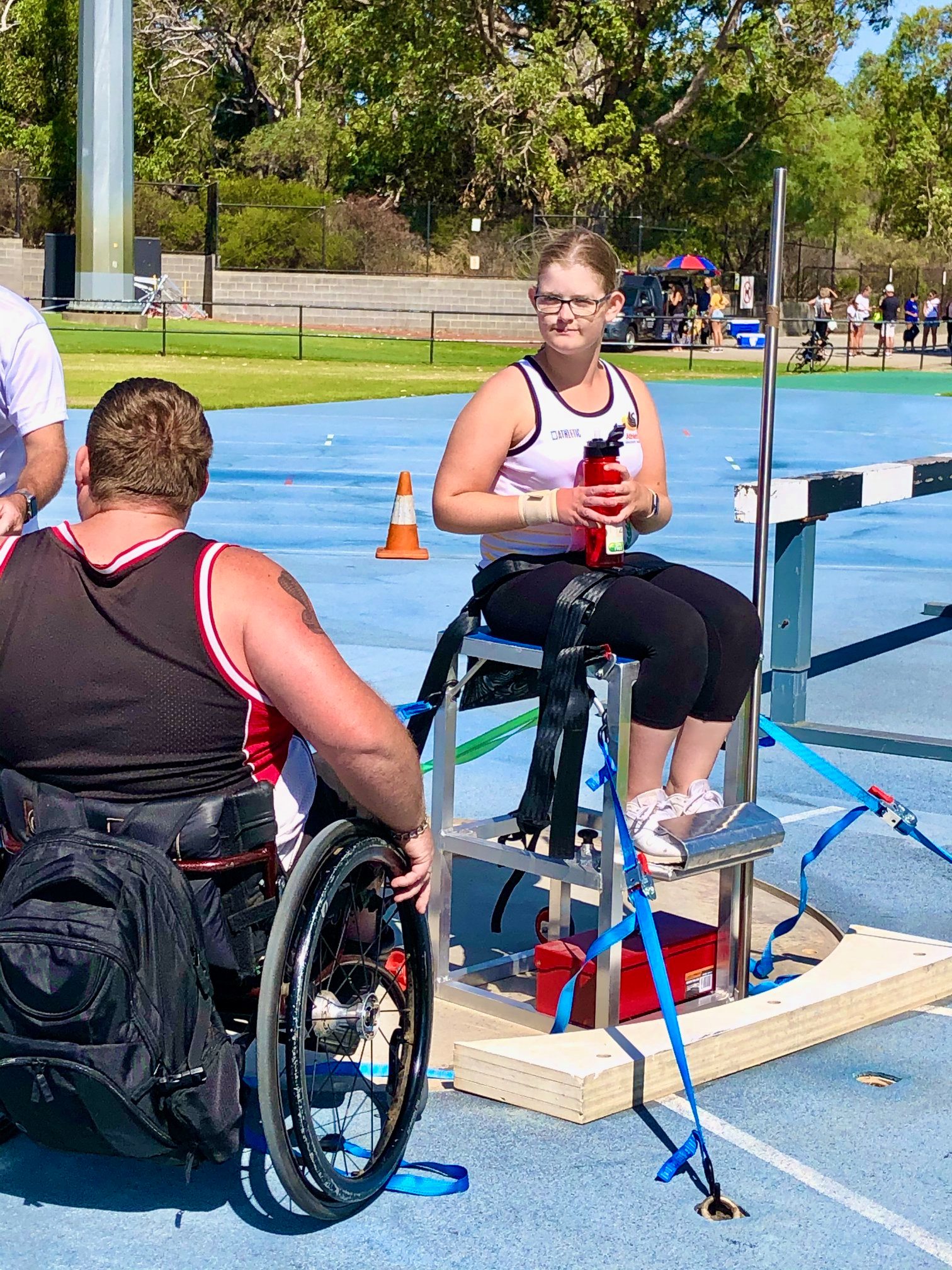 In 2014 I was a part of a research program at the Ability Centre (was known before as the Cerebral Palsy Centre) to see how running could change someone with CP (cerebral palsy). This was a 10-week program at the centre filled with running drills and gym equipment that we as the participants used. After the first couple of weeks my parents could see a massive difference in me, not only with my walking and my speech, but also my schoolwork improved, I was less tired during the day, I was happier and so much many more things started improving. As a result of me being more active and through running.
In 2014 I was a part of a research program at the Ability Centre (was known before as the Cerebral Palsy Centre) to see how running could change someone with CP (cerebral palsy). This was a 10-week program at the centre filled with running drills and gym equipment that we as the participants used. After the first couple of weeks my parents could see a massive difference in me, not only with my walking and my speech, but also my schoolwork improved, I was less tired during the day, I was happier and so much many more things started improving. As a result of me being more active and through running.
After those first ten weeks, we signed up to do another program with them, but this time the physios weren’t pushing me and the others hard enough to achieve the same result. In August of 2016 my mother and I reached out to Rebound WA, and they gave me a para running coach to contact, Mark. I did a couple of running training sessions with him and his athletics, but not long after that Mum and I both knew that I wasn’t good at running.
 Mark asked me to get a classification, so I could compete on the track. A classification is a number which summarize your disability, everyone with the same classification has similar disabilities then you, e.g. I’m a T36 and everyone else that is a T36 runs similar to me. During my classification one of the classifiers asked me if I wanted to do something else as well as running and I said, “I don’t know”. The classifiers took mum and I to the shed, on the other side of the building in the athletics track, I sat down on a seated throws frame, and ever since then I knew it was for me.
Mark asked me to get a classification, so I could compete on the track. A classification is a number which summarize your disability, everyone with the same classification has similar disabilities then you, e.g. I’m a T36 and everyone else that is a T36 runs similar to me. During my classification one of the classifiers asked me if I wanted to do something else as well as running and I said, “I don’t know”. The classifiers took mum and I to the shed, on the other side of the building in the athletics track, I sat down on a seated throws frame, and ever since then I knew it was for me.
Not long after that we got in touch with my first throws coach, Phil. He got me to throw a shot put standing up and then he got one of his athletes frames out to get me to throw in it. As soon as I did my first throw in the frame, Phil said, “I can get you to the Paralympics, I think you will be good at it.” And then six months later I competed in my first Junior National Championships at 16 years old, I represented Western Australia in the women’s mix para (seated throws and standing throws) under 20 shot put. Ever since then I became the under 18 and under 20 Australian record for F33 – seated throws: shot put, discus and javelin.
Athletics – classifications
Para-sport is very similar to able-bodied sport, but the only difference is; it is adapted, modified and possibly change to suit disabled people’s needs. Para-athletics is no different.
 For most para sports each athlete has to have a classification, which is a number that represents your disability. I’m going to give athletics for an example – T/F21 classification is suited for everyone that has down syndrome, some of you may not know this as this is the newest classification in athletics. If you are competing against other para-athletes and from other classifications. Once your event has finished an official will take it away to get marked, and whoever wins has the highest percentage. This percentage is out of the world record. I don’t know about other sports, but for athletics, this is done this way to give para-athletes a fair advantage.
For most para sports each athlete has to have a classification, which is a number that represents your disability. I’m going to give athletics for an example – T/F21 classification is suited for everyone that has down syndrome, some of you may not know this as this is the newest classification in athletics. If you are competing against other para-athletes and from other classifications. Once your event has finished an official will take it away to get marked, and whoever wins has the highest percentage. This percentage is out of the world record. I don’t know about other sports, but for athletics, this is done this way to give para-athletes a fair advantage.
Para-athletics has one of the biggest classification systems there is. There are more than 30 classes, and these are based on your disabilities. e.g. cerebral palsy T/F32-38. The T means track, and F means field. At world competitions, you will only see one of them e.g. F33 and this means that there is an event on the field. Click here for more information on each classification there is for para-athletics.
Getting into para-sport
From my own experience with getting into athletics, I believe that there needs to be a change, to make para-sport more accessible to the disability community; and that change is now. There are so many sporting organisations out there that are designed for disabled people, and they are trying their best to expose disabled people to para-sports. Some of these organisations include; Rebound WA, Wheelchair Sports NSW and Sporting Wheelies and Disabled Association. These are just some of the para-sporting organisations throughout Australia. You can find the full list of them here.
 Late last year the Australian Paralympic Committee setup a new program, The Paralympic Education Program. This is designed to educate our younger generation, primary and high school students about disability sports. They did this previously with the lead up to the London 2012 Paralympic Games, which was a huge success, so they have been running this program again in the lead up to the Tokyo 2020 (now 2021) Paralympic Games. Australian Paralympians go to schools across the country to educate the students in these schools about para-sport, as well as exposing them to disability. For more information on this please click here.
Late last year the Australian Paralympic Committee setup a new program, The Paralympic Education Program. This is designed to educate our younger generation, primary and high school students about disability sports. They did this previously with the lead up to the London 2012 Paralympic Games, which was a huge success, so they have been running this program again in the lead up to the Tokyo 2020 (now 2021) Paralympic Games. Australian Paralympians go to schools across the country to educate the students in these schools about para-sport, as well as exposing them to disability. For more information on this please click here.

